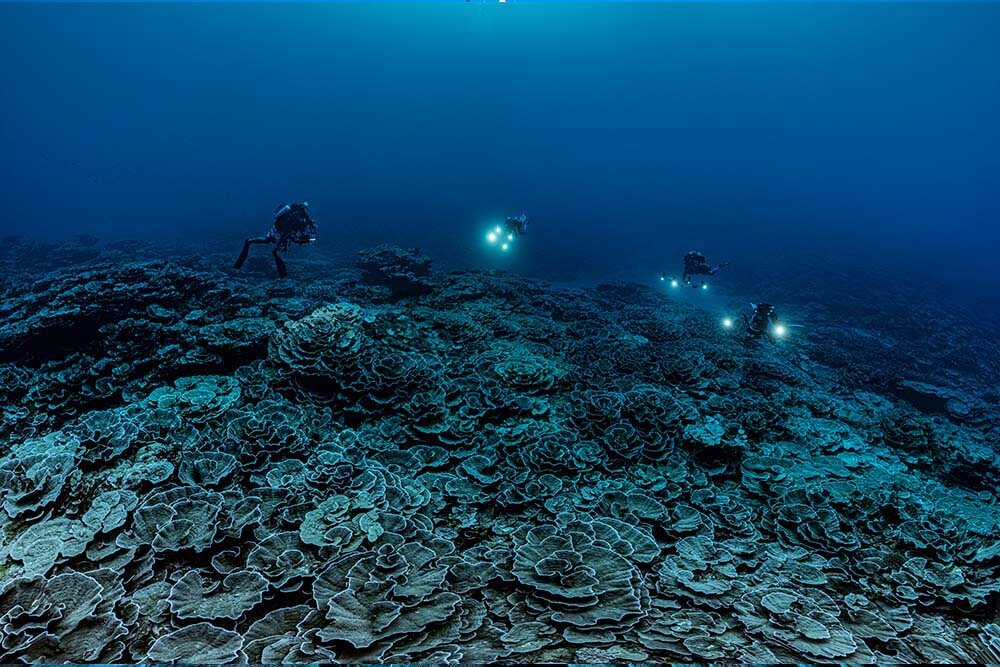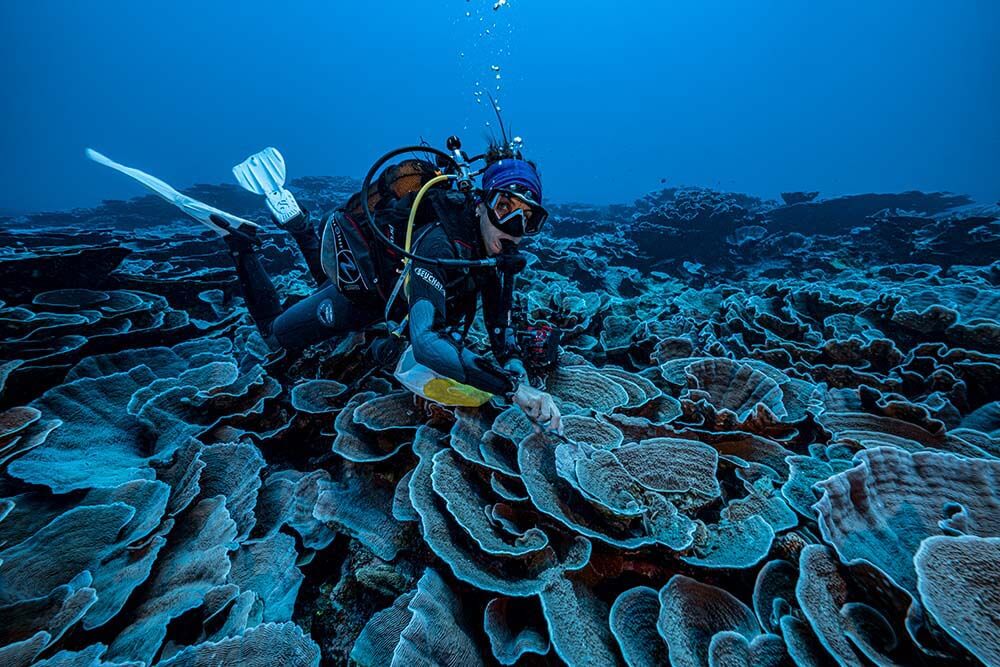
A giant, pristine coral reef recently discovered off the shores of Tahiti by a UNESCO scientific expedition may hold clues for future coral conservation, according to the scientists who found it.
The 3km-long reef, densely populated with ‘rose-shaped’ coral, lies between 30-70m deep, and extends approximately 70m at its widest point. The reef was discovered as part of the UNESCO partner ‘1 Ocean‘ campaign to explore and photograph the world’s oceans, founded by French underwater photographer Alexis Rosenfeld. ‘It was magical to witness giant, beautiful rose corals which stretch for as far as the eye can see,’ said Rosenfeld after diving the reef. ‘It was like a work of art.’
The coral species that produce the giant rose-shaped corals are primarily Porties rus, which produces plates and fingers of stony corals, and Pachyseris speciosa, commonly known as ‘ringed plate coral’. The plates of coral, some stretching up to 2m across, gave the reef the appearance of ‘a giant rose garden going as far as the eye can see, according to Dr Julian Barbière, Head of Marine Policy and Regional Implementation Section at UNESCO’s Integovernemental Oceanographic Commission.


The Tahiti reef is unusual in that it is one of very few reefs that exist in the ocean’s ‘twilight zone’, which stretches from 30 to 120m of depth, where light penetration begins to diminish. It is thought that the reef’s location in open water, where there is no run-off and less sedimentary dispersion in comparison to fringing reef systems, has allowed the coral to thrive in a location free from human impacts.
The reef’s depth and location – not easily visted by divers – suggests that the new discovery may not be unique. ‘There might be many more large reefs in our ocean at such depth that require more investigation,’ said Barbière. ‘This could be one of the largest coral reefs at this depth as far as we know, but the fact is that we haven’t really looked for coral reefs at this depth.’
The condition of the reef is of particular significance, as it seems to have escaped the bleaching that has caused devastation to coral reefs around the world. The deeper water is less affected by warming waters closer to the surface, which cause corals to eject the symbiotic dinoflagellates known as zooxanthellae – which live within the coral polyps and provide them with nutrients and colour – leading to the bleached appearance of the corals.

The UNESCO scientists estimate that the reef took at least 25 years to reach its current extent – and appears to have escaped unscathed from bleaching events that have occurred across the region in recent years.
‘French Polynesia suffered a significant bleaching event back in 2019, however, this reef does not appear to have been significantly affected,’ said Dr Laetitia Hédouin of France’s National Centre of Scientific Research (CNRS), one of the scientists involved in the first diving expedition to the reef.
‘The discovery of this reef in such a pristine condition is good news and can inspire future conservation,’ said Hédouin. ‘We think that deeper reefs may be better protected from global warming.’


